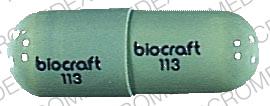Cephradine Dosage
Applies to the following strengths: 250 mg; 500 mg; 125 mg/5 mL; 250 mg/5 mL
Usual Adult Dose for:
- Cystitis
- Otitis Media
- Pharyngitis
- Upper Respiratory Tract Infection
- Pyelonephritis
- Skin or Soft Tissue Infection
Usual Pediatric Dose for:
- Pharyngitis
- Upper Respiratory Tract Infection
- Bacterial Infection
- Skin and Structure Infection
- Otitis Media
Additional dosage information:
Usual Adult Dose for Cystitis
Uncomplicated: 500 mg orally every 12 hours
Complicated: 500 mg orally every 6 hours or 1 g orally every 12 hours
Usual Adult Dose for Otitis Media
250 mg orally every 6 hours or 500 mg orally every 12 hours
Usual Adult Dose for Pharyngitis
250 mg orally every 6 hours or 500 mg orally every 12 hours
Usual Adult Dose for Upper Respiratory Tract Infection
250 mg orally every 6 hours or 500 mg orally every 12 hours
Usual Adult Dose for Pyelonephritis
500 mg to 1 g orally every 6 hours
Therapy should be continued for approximately 14 days, depending on the nature and severity of the infection.
Usual Adult Dose for Skin or Soft Tissue Infection
250 mg orally every 6 hours or 500 mg orally every 12 hours
Usual Pediatric Dose for Pharyngitis
9 months or older: 25 to 50 mg/kg/day in divided doses every 6 to 12 hours
Maximum dose: 4 g per day
Usual Pediatric Dose for Upper Respiratory Tract Infection
9 months or older: 25 to 50 mg/kg/day in divided doses every 6 to 12 hours
Maximum dose: 4 g per day
Usual Pediatric Dose for Bacterial Infection
9 months or older: 25 to 50 mg/kg/day in divided doses every 6 to 12 hours
Maximum dose: 4 g per day
Usual Pediatric Dose for Skin and Structure Infection
9 months or older: 25 to 50 mg/kg/day in divided doses every 6 to 12 hours
Maximum dose: 4 g per day
Usual Pediatric Dose for Otitis Media
9 months or older: 75 to 100 mg/kg/day in divided doses every 6 to 12 hours
Maximum dose: 4 g per day
Renal Dose Adjustments
CrCl 21 mL/min or more: 500 mg orally every 6 hours
CrCl 5 to 20 mL/min: 250 mg orally every 6 hours
CrCl 4 mL/min or less: 250 mg orally every 12 hours
Liver Dose Adjustments
Data not available.
Dose Adjustments
Severe or chronic infections may require doses up to 1 g orally every 6 hours or up to 8 g/day intramuscularly.
Precautions
Clostridium difficile associated diarrhea (CDAD) has been reported with almost all antibiotics and may potentially be life-threatening. Therefore, it is important to consider this diagnosis in patients who present with diarrhea following cephalosporin therapy. Mild cases generally improve with discontinuation of the drug, while severe cases may require supportive therapy and treatment with an antimicrobial agent effective against C difficile. Hypertoxin producing strains of C difficile cause increased morbidity and mortality; these infections can be resistant to antimicrobial treatment and may necessitate colectomy.
Cephalosporins may be associated with a fall in prothrombin activity. Risk factors include renal or hepatic impairment, poor nutritional state, a protracted course of antimicrobial therapy, and chronic anticoagulation therapy. Prothrombin times should be monitored and vitamin K therapy initiated if indicated.
Serious and occasionally fatal hypersensitivity reactions have been reported with antibiotics. The drug should be discontinued immediately at the first appearance of a skin rash or other signs of hypersensitivity. Severe, acute hypersensitivity reactions may require treatment with epinephrine and other resuscitative measures including oxygen, intravenous fluids, antihistamines, corticosteroids, cardiovascular support and airway management as clinically indicated.
Dosage adjustments are recommended in patients with impaired renal function (CrCl 20 mL/min or less or on hemodialysis). Some cephalosporins have been associated with seizures in renally impaired patients with elevated serum concentrations. The drug should be discontinued if seizures occur. Nephrotoxicity has occurred with concomitant cephalosporins and aminoglycosides or potent diuretics. Renal function should be monitored, especially in elderly patients.
Dialysis
Patients on chronic intermittent hemodialysis should receive 250 mg initially, repeated at 12 hours and after 36 to 48 hours.
More about cephradine
- Check interactions
- Compare alternatives
- Drug images
- Side effects
- During pregnancy
- Drug class: first generation cephalosporins
- Breastfeeding
Professional resources
Other brands
Related treatment guides
See also:
Further information
Always consult your healthcare provider to ensure the information displayed on this page applies to your personal circumstances.


